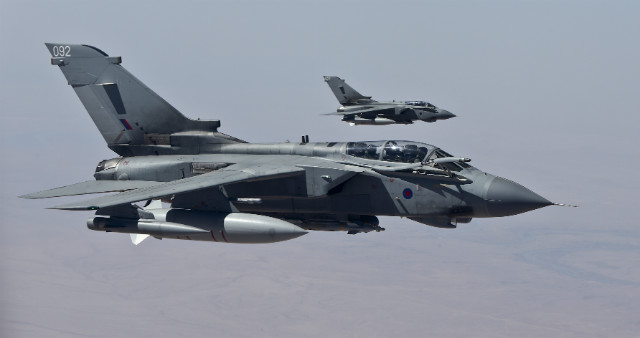The UK Ministry of Defence has bought a number of Leonardo BriteCloud active decoys for operational testing on-board the Royal Air Force’s Panavia Tornado GR4.
A £2.5 million ($3.2 million) concept-of-operations test phase follows initial evaluations of the system and its integration on to the Tornado in October 2015.
Now the RAF is assessing how the technology would be used in operational scenarios, with trials set to take place later this year at a test range in the USA.
BriteCloud is deployed from a chaff and flare dispenser, and comes in a standard 55mm (2.1in) size. It diverts radar frequency-seeking missiles by creating false signals away from the aircraft.
Leonardo says the assessment will help create an instruction manual for crews that will deploy with BriteCloud, and is “usually seen as the last step before the new technology goes into use on real missions”.

Crown Copyright
“The cutting-edge technology behind BriteCloud demonstrates the MoD’s commitment to harnessing and growing the incredible creativity in our defence supply chain,” defence secretary Michael Fallon says.
“Supported by our £178 billion investment in equipment, these new decoy systems show that we are continually pushing the boundaries of innovation, making the most of Great British skills and brains to keep our armed forces safe from our adversaries.”
BriteCloud is also an option on the Saab Gripen and has been tested on the Swedish-built jet.
Source: FlightGlobal.com























